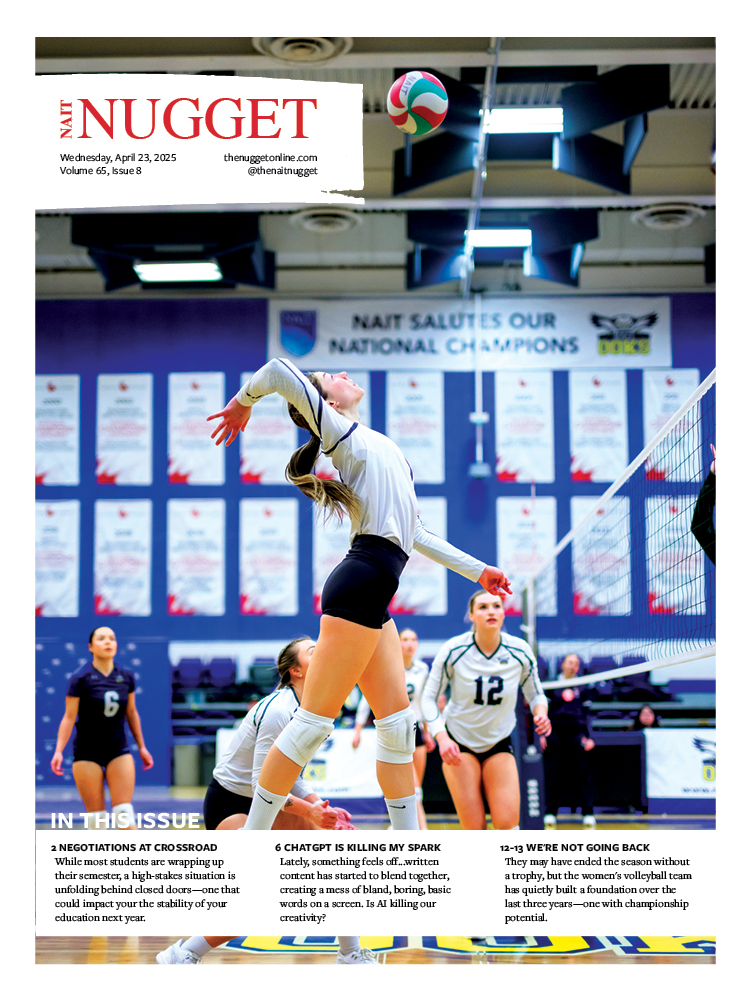By Zachary Flynn
The mass migration of classes to online platforms gave instructors in many different areas two main options: live synchronous classes or asynchronous learning through reading or recorded lectures.
For the traditional student who is used to sitting in a classroom taking notes with an instructor 10 to 20 feet away, the change to not only learn from your living room but also potentially never meeting your teacher can be a difficult change.
For Brayden Shopland, a full-time worker who’s also enrolled in a full courseload for the fall semester at NAIT, the online learning environment has been a welcome addition. And with four of his five classes taught asynchronously, it provides him with even more flexibility than he previously expected.
“I think it’s fantastic. I have a very busy schedule and being able to work around that schedule and figure out when I want to learn… I can choose to learn at 5 o’clock a night or 7 in the morning,” said Shopland, who spends his days working as the general manager for the Beaumont Curling Club.
“I’m very surprised by how much I am liking asychnornous learning and online classes so I think I’d probably want to stick to online learning for the majority of my classes [in the future]. I might want to do some research and see if there are some classes to do better in person, but right now I’m leaning more towards online learning,” said Shopland.
Students aren’t the only ones having to transition to this new educational style.
Teachers like Jim Higginson, a finance instructor at NAIT, have been experimenting with a mixture of asynchronous and live lessons in his first year teaching exclusively online.
“I like to leverage the benefits of online learning with the flexibility while also trying to respect the benefits that we had face-to-face with the interactions between the instructors and the students and even student-to-student connections as well,” said Higginson.
“I do try to make a point of checking in with the class and making sure it’s working or seeing if there’s anything we need to change.”
With some programs exclusively online for the fall semester, it’s also provided an opportunity for instructors like Sarah Magdalisnki, who previously taught their online classes asynchronously, to redesign their online course delivery and attempt to blend both styles of teaching.
“I guess I tried to base it off of what my experience was like in the actual classroom. I’ve found that when I’m walking and going through notes, sometimes I’m too slow for some students and too quick for others,” said Magdalinski.
“It’ll be up to [the students] whether it’s a successful process or not.”
She also said that the data she gets from Moodle allows her to tailor her live lectures.
“They think I don’t know they’re not watching the videos but another benefit of asynchronous teaching is that I actually look to see how many students watch the videos, how long they’re spending on the videos, whether they’re repeat watching the videos, and it gives me an idea of how to adjust my synchronous sessions,” she added.
And for students like Brayden Shopland, this semester has proven how successful you can be while learning online.
“I think the benefit of everybody doing online classes now is that for those who want to continue with online learning when we have the option to go back in-person, the material is going to be a little better, stronger, clearer. I think that’s a benefit to come of this.”






